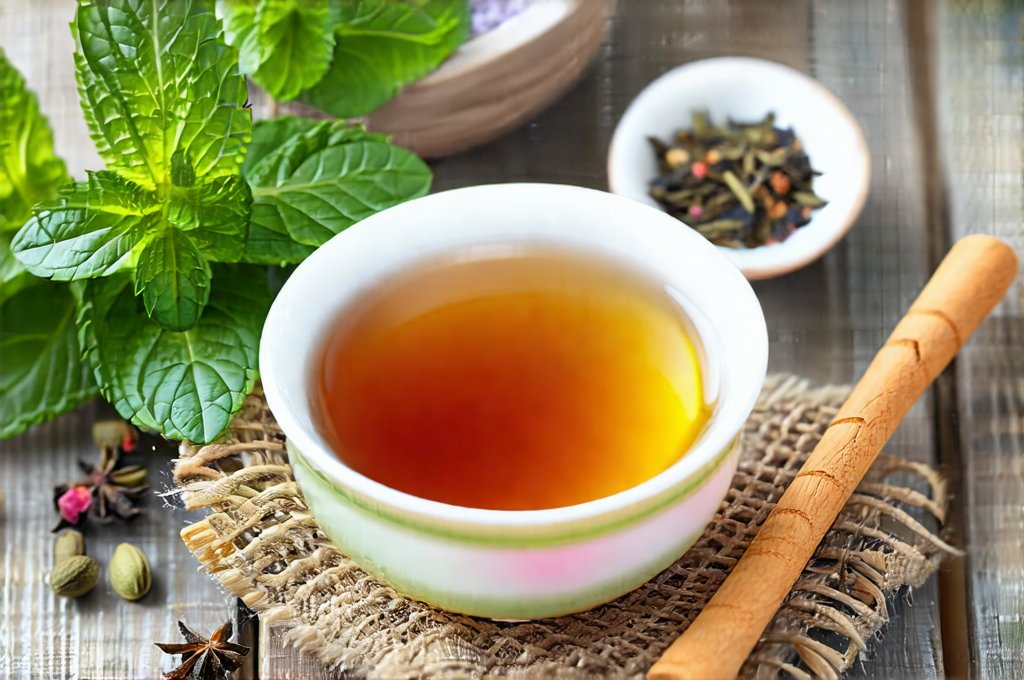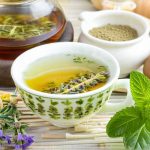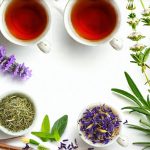Nausea is an incredibly common experience, triggered by everything from motion sickness and food poisoning to stress and pregnancy. For many, reaching for a soothing cup of herbal tea feels like a natural and comforting way to ease the discomfort. However, what brings relief for one person can sometimes worsen nausea in another – even when sipping the very same brew. This seemingly paradoxical effect isn’t due to faulty tea or individual sensitivity alone; it’s deeply intertwined with the unique ecosystem flourishing within each of our digestive systems: the gut microbiome. Understanding how different herbal teas interact with varying ‘gut types’ is key to unlocking a truly personalized approach to nausea relief, and moving beyond one-size-fits-all remedies.
Our guts are far more than just digestion factories. They’re complex communities populated by trillions of bacteria, fungi, viruses, and other microorganisms – collectively known as the gut microbiome. This microbial landscape profoundly influences our health, impacting everything from immunity and mental well-being to nutrient absorption and, crucially, digestive function. Different people harbor vastly different microbial compositions, shaped by genetics, diet, lifestyle, and environmental factors. These differences dictate how efficiently we digest food, how sensitive we are to certain compounds, and ultimately, how we respond to herbal teas aimed at alleviating nausea. A tea that feeds beneficial bacteria in one person’s gut might inadvertently fuel problematic microbes in another, potentially exacerbating symptoms instead of soothing them. Understanding the influence of fiber type can help navigate this complexity.
The Role of Gut Microbiome Diversity & Dominance
A healthy gut typically boasts high diversity – a wide array of microbial species coexisting harmoniously. This diversity provides resilience and adaptability, allowing the gut to better withstand disruptions like illness or dietary changes. However, in many individuals, certain bacterial groups come to dominate, creating imbalances known as dysbiosis. These dominant strains can significantly impact how we experience nausea and respond to herbal remedies. For example, a gut dominated by bacteria that produce excessive gas can find even mildly carminative teas (designed to reduce gas) ineffective or even counterproductive, leading to bloating and increased discomfort. Conversely, someone with low microbial diversity may struggle to break down complex compounds found in some herbal teas, resulting in fermentation and nausea-inducing symptoms. This is especially relevant when considering how fermented foods might impact sensitive digestion.
The specific bacterial populations present also influence our sensitivity to bitter compounds, which are common in many herbs used for nausea relief. Some bacteria help metabolize these compounds, reducing their impact on the gut lining; others lack this ability, leading to increased irritation and potentially triggering nausea. This explains why a traditionally soothing tea like chamomile – containing bitter sesquiterpene lactones – can be incredibly helpful for some but cause stomach upset in others. Ultimately, understanding your dominant gut microbes is crucial for choosing teas that will truly support digestive comfort.
Identifying Potential Gut Types & Nausea Triggers
There isn’t a single definitive way to categorize ‘gut types,’ but several patterns emerge based on microbial dominance and associated symptoms. One common type is the “dysbiotic” gut, characterized by low diversity and an overgrowth of potentially harmful bacteria like Klebsiella or Clostridium. Individuals with this gut type often experience bloating, gas, constipation, or diarrhea, and may be particularly sensitive to fermented foods, high-fiber diets, and certain herbal teas. Another is the “SIBO” (Small Intestinal Bacterial Overgrowth) gut, where bacteria normally found in the colon migrate into the small intestine, causing fermentation of undigested carbohydrates and resulting in bloating, gas, and nausea. Identifying these patterns can guide tea selection. It’s important to consider the effects of antibiotics on gut health as well, since they often disrupt the microbiome.
- For dysbiotic guts: Focus on teas that promote microbial diversity and support beneficial bacteria like Bifidobacteria and Lactobacilli. Gentle herbs with prebiotic properties (feeding good bacteria) are often preferred over strong digestive stimulants.
- For SIBO guts: Avoid teas that further feed fermenting bacteria, such as those high in FODMAPs (fermentable oligosaccharides, disaccharides, monosaccharides, and polyols). Low-FODMAP herbal options may be better tolerated.
It’s important to note that self-diagnosing gut types is not recommended; consulting a healthcare professional specializing in gut health can provide accurate assessment and personalized recommendations. However, paying attention to how different teas affect your specific symptoms can offer valuable clues about your gut’s unique needs. Knowing why nausea can be worse on an empty stomach is also helpful in tailoring strategies to manage it.
Herbal Tea Choices Based on Gut Sensitivity
When it comes to choosing herbal teas for nausea relief, several options stand out based on their traditional uses and potential interactions with the gut microbiome. Ginger tea is a classic remedy known for its ability to calm stomach upset and reduce inflammation. However, individuals with highly sensitive guts or SIBO may find ginger’s pungent properties irritating; in these cases, opting for a smaller amount of fresh ginger steeped briefly can minimize discomfort. Peppermint tea, another popular choice, can be helpful for relieving nausea associated with indigestion but is often problematic for those with heartburn or GERD (gastroesophageal reflux disease) due to its ability to relax the lower esophageal sphincter.
Chamomile, as mentioned earlier, is a complex one – beneficial for some, irritating for others. Its calming properties are linked to compounds that bind to GABA receptors in the brain, reducing anxiety and promoting relaxation, which can indirectly alleviate nausea. However, individuals with allergies to ragweed or other Asteraceae family plants should avoid chamomile due to potential cross-reactivity. Finally, fennel tea is a carminative herb that helps reduce gas and bloating but may not be suitable for those prone to diarrhea. The key takeaway is that there’s no universally “best” herbal tea for nausea; the ideal choice depends on your individual gut profile and sensitivity levels.
Exploring Prebiotic & Probiotic Teas
Beyond simply soothing symptoms, some herbal teas can actively support a healthier gut microbiome. Certain herbs contain prebiotic fibers – non-digestible carbohydrates that feed beneficial bacteria in the colon. Examples include dandelion root tea, chicory root tea, and burdock root tea (though these should be avoided by those with FODMAP sensitivities). These teas can help increase microbial diversity and improve overall digestive function over time.
Furthermore, emerging research suggests that fermented herbal teas – like kombucha made with specific herbs known for their anti-nausea properties – may offer probiotic benefits, introducing live beneficial bacteria into the gut. However, it’s crucial to choose kombucha carefully, ensuring it’s unpasteurized (to preserve the probiotics) and low in sugar. For those who prefer a milder approach, incorporating small amounts of herbs like elecampagne root or marshmallow root – both known for their soothing properties and potential prebiotic effects – into your regular tea routine can contribute to long-term gut health and resilience. Remember, building a healthy gut is an ongoing process, and herbal teas can be valuable tools in that journey. It’s also worth considering natural remedies for mild digestive discomfort. Additionally, be mindful of popular health trends that may worsen nausea. Finally, understanding why carbonated drinks, caffeine and alcohol can exacerbate nausea is crucial for holistic management.


















